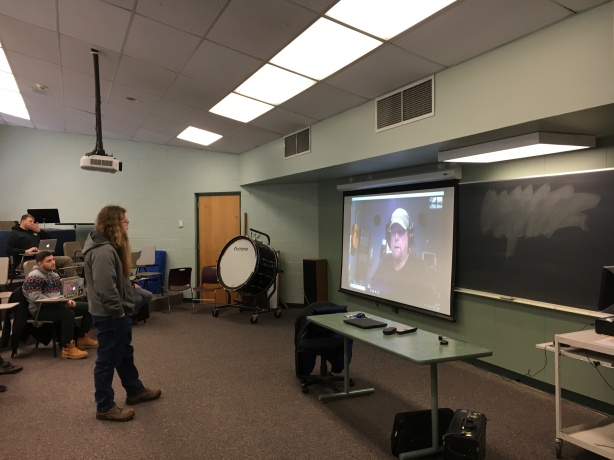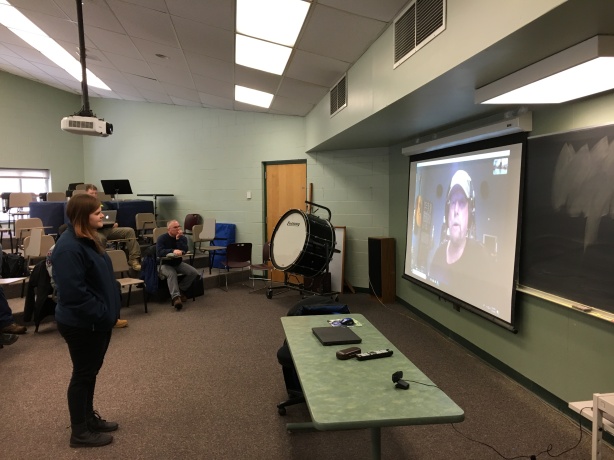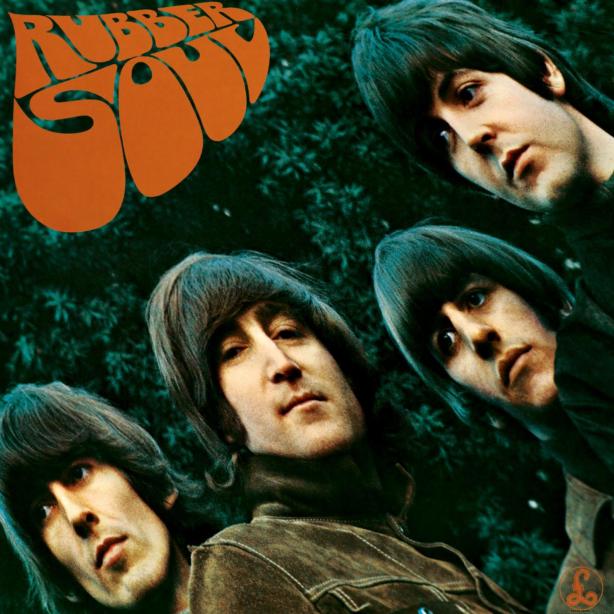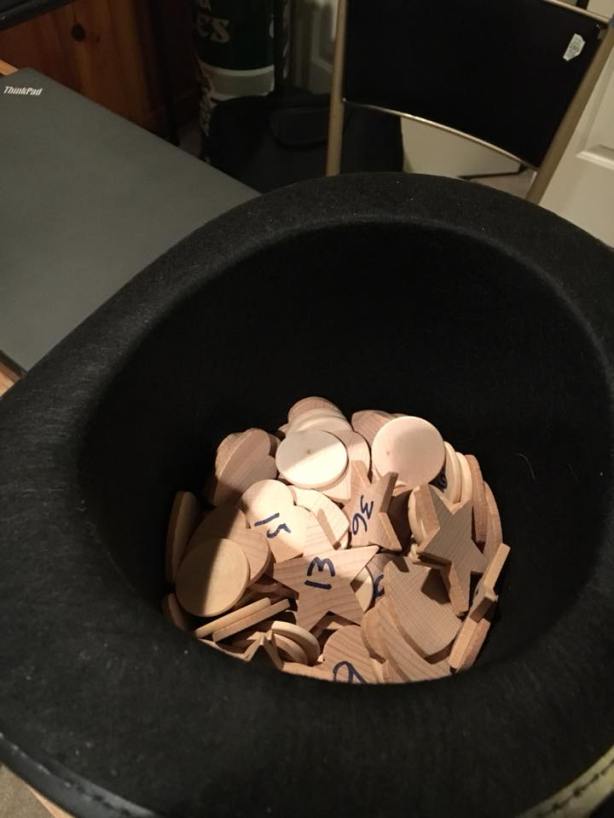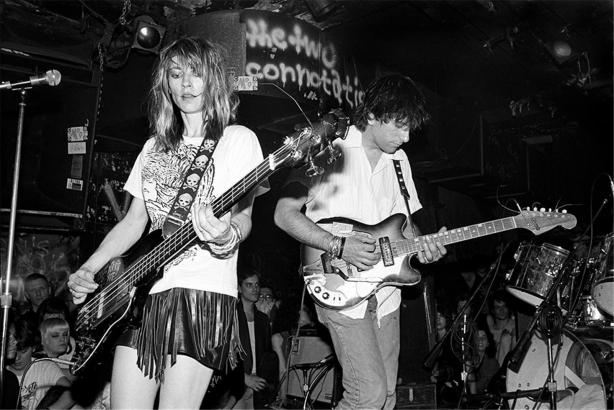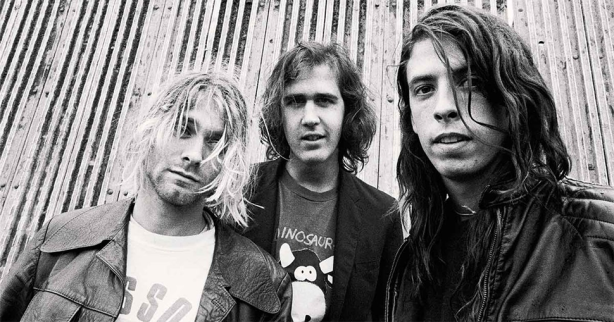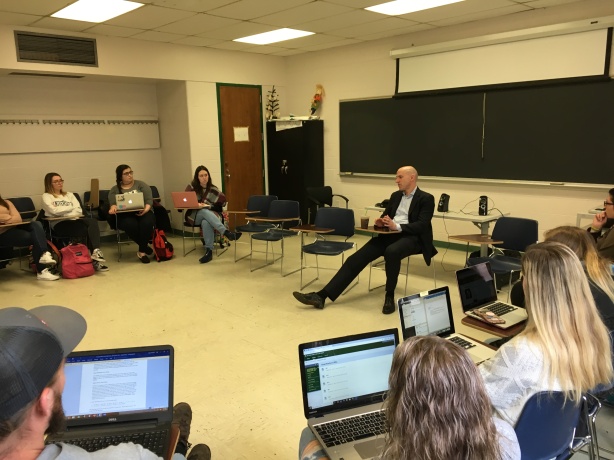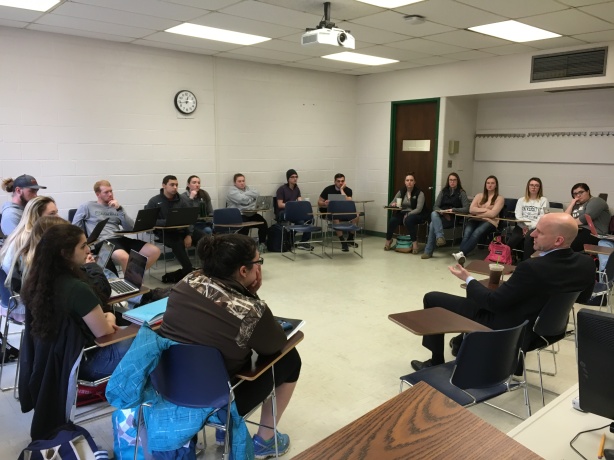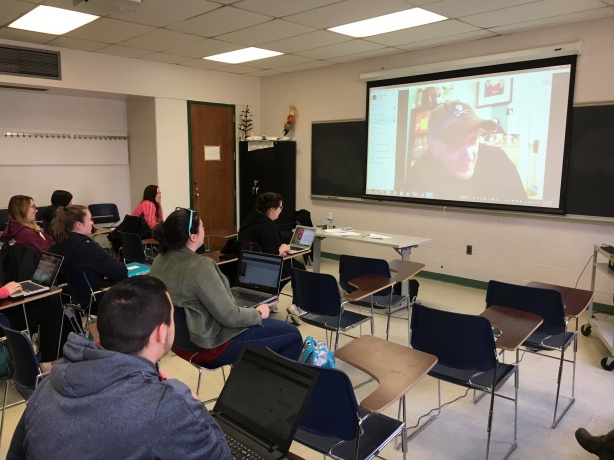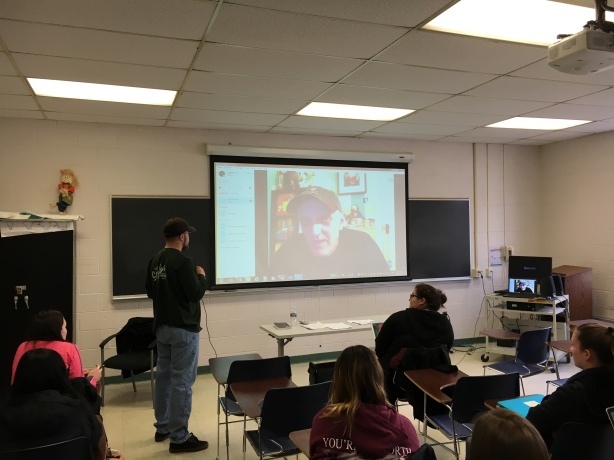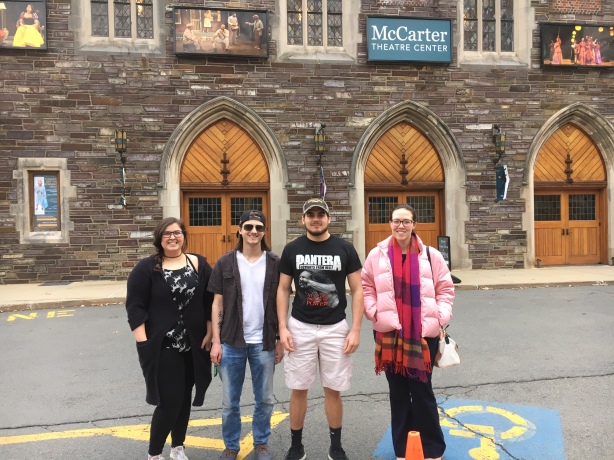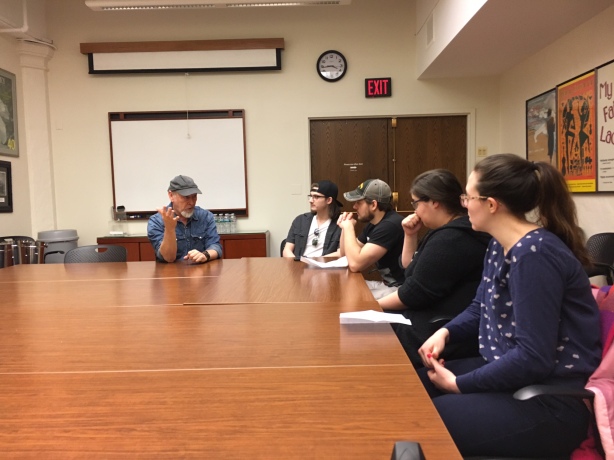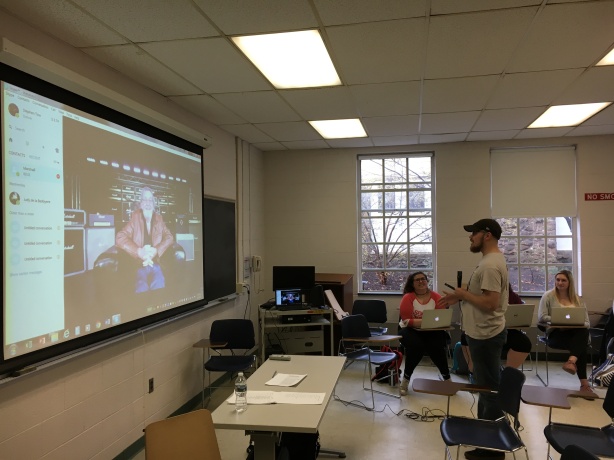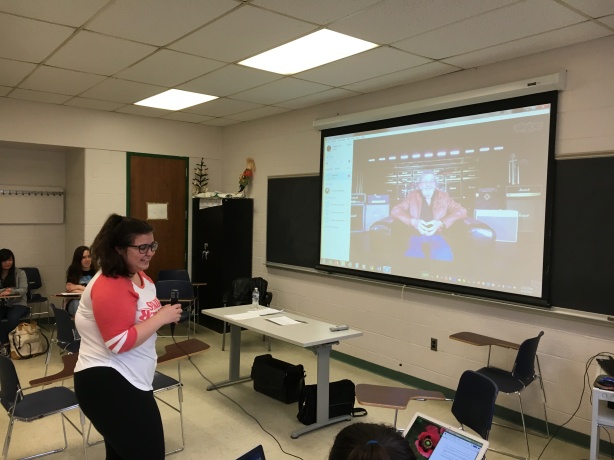Kevin Whitworth Meets the Class
Kevin plays guitar for Love Battery, one of my favorite Seattle bands. LB was another one of those famously incestuous Seattle entities, combining the talents of musicians from Room Nine, Crisis Party, the U-Men, and Skin Yard. Unlike some of their more sludgy Sub Pop brethren, however, Love Battery combined swirling melodic distortion with the “g” word. Kevin has joked that his band has been referred to as “grungedelic.”
So Kevin began to talk with us via Skype from Seattle at 12:20 pm our time. After a rather slow start, the students began peppering him with questions and Kevin happily answered them. First, though, I asked Kevin about his initial move to Seattle from New England. He arrived in the Northwest in 1984, and in Seattle, the initial punk rock scene was petering out and the grunge thing hadn’t really gotten its legs yet. So to the outside world it was pretty dead. But yet it wasn’t.
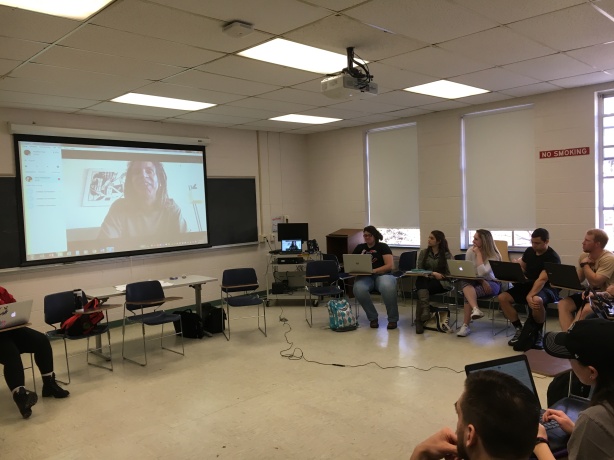
(Kevin answers a question.)
In 1984, Green River and Soundgarden were just getting started, psychedelic Room Nine was rolling, the Young Fresh Fellows were beginning to entertain their audiences with their poppy/punky songs and cleverly subversive lyrics, and the Walkabouts were combining Fairport Convention with the Jam. Oh yeah, there was also this band called the U-Men that I’m quite fond of. The U-Men combined punk rock with jazz with “I’d better get out of here or I’m going to die.”
So Kevin entered into all of that when he first set foot in Seattle. He talked about how open the Seattle music scene was at the time, and how supportive it was. By contrast, in Boston, you had to have a record out to even get a gig, but then it was you and everyone else. And bands were pretty competitive.
One student asked about Crisis Party, a band Kevin was briefly in when he first arrived in town. The question surprised him. He said that band was more Guns N Roses than punk rock, but he was excited to be part of something that could put out a record. Back in 1980s Seattle, just making a record was a big deal.
One student asked Kevin about his favorite gig. He mentioned a show Love Battery did in Madison, Wisconsin in the early ’90s where no one showed up. The band still played its ass off, and after the show, the bartender and other workers at the club came up, shook the LB members’ hands, and asked for autographs. Even though he’s played much bigger gigs, that one really meant a lot to him.
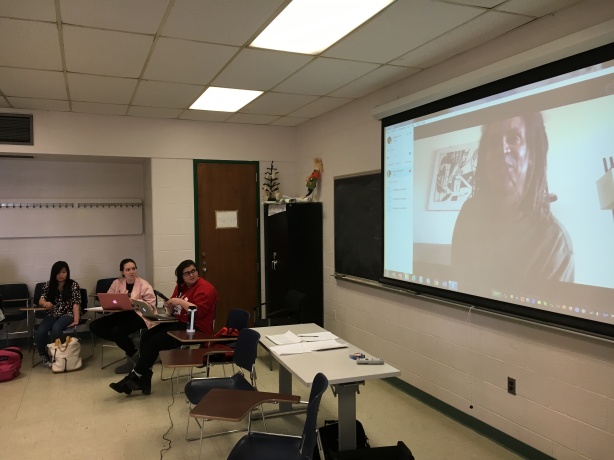
I asked him about “old” versus “new” Seattle. The city is, I believe, the third most expensive to live in, after New York and San Francisco. It didn’t used to be that way. Kevin talked about paying rent in Seattle’s Capitol Hill neighborhood of about $50 per month, and being able to spend most of his time jamming/writing with his fellow musicians. Now that same rent would be something like $2,500 per month. The result is that it has kind of killed the local organic art community. That being said, Kevin doesn’t bemoan the change in Seattle and cities just evolve over time. Seattle still has a ton of talented local musicians.
One student inquired about his current projects. At this point, Kevin has a career and a family, so he can’t have the same lifestyle he did 30 years ago. He does play guitar from time to time in Sky Cries Mary, a local psychedelic outfit, along with Skin Yard’s Jack Endino. (Note, former SCM singer Jon Davison sang for Yes…saw them a few years ago. Fantastic.) In addition, this August, Love Battery’s classic line-up will reform with Kevin and Ron Rudzitis on guitar, Jim Tillman on bass, and Jason Finn on drums to play the entirely of their 1992 classic album, Dayglo. https://www.alternativenation.net/legendary-grunge-band-reunite-after-25-years/
Kevin was great as expected and the students enjoyed chatting with him.
Afterward, we talked about the song selections for the week, which comprised hardcore punk, Eighties Mainstream, and the Paisley Underground. As I suspected, most of the class could live without the hypersonic hardcore punk thing, except for Marshall (see some earlier posts) who dug it…of course. I did get some laughs when I played the students an excerpt of the Dead Kennedys’ “Nazi Punks Fuck Off.”
The Eighties Mainstream was a tough one for me, because I quite frankly hated it. So I selected artists that were at least sort of rock n roll and brought something to the party…the Police, Dire Straits, U2, and Prince among them. There seemed to be a U2 hate party going on, except for one student who defended them as a great live act. I don’t have a problem with them…at least they were political, which wasn’t the norm in the mainstream back then.
We were just about out of time when we talked about the Paisley Underground. I played them a little Dream Syndicate. One student talked about the Bangles and how he liked them and appreciated how difficult it must have been for a female act to break into a male-dominated industry.
That wrapped things up until Wednesday, when Rogers Stevens of Blind Melon will be stopping by. Until then…
